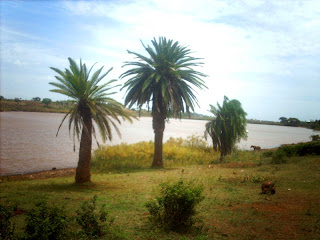RUIRU YOUTH FOR DEVELOPMENT AND ENVIRONMENT CONSERVATION.
RYDEC is a youth group centered in the Ruiru area of the central province of Kenya. The group was founded on the 23rd of August,2008.Youth economic empowerment to alleviate poverty and environmental conservation by use of underutilized available resources The group aims to put to use resources within its reach to alleviate the suffering of the youth and communities in this area and while protecting the delicate balance of nature.
Monday, September 19, 2016
However we are now back with more projects and information to the Ruiru Youth . Development is a must do thing for us youths and the society at large. We have so much in store for you as the youth and society too. Do not feel left you are in our thoughts so much. The projects ahead of us will be communicated on time through the right people and we will all get informed. We look forward to working well with you.
Friday, May 15, 2009
TREE PLANTING ENDEAVOUR AT RUIRU GIRLS SECONDARY SCHOOL




Members of RYDEC engaged in a rigorous tree planting exercise at the RUIRU GIRLS SECONDARY SCHOOL where more than 600 trees of indigenous species were planted.
The event was graced by the area chief and a myriad of other dignatories. The District, municipal and Forest Authorities were well represented at the special occasion. Special thanks goes to them for their part in the realization of this objective.
Members of the group prepared the planting surface well in advance and proceeded to groom and water the seedlings to maturity

Monday, February 9, 2009
Monday, February 2, 2009
CAGE CULTURE IN DAMS
Site selection and placement of cages
Large bodies of water tend to be better suited for cage culture than small ponds because the water quality is generally more stable and affected less by fish waste. Exceptions are eutrophic waters rich in nutrients and organic matter. Small (1 to 5 acre) ponds can be used for cage culture, but provisions for water exchange or emergency aeration may be required. Cages should be placed where water currents are greatest, usually to the windward side. Calm, stagnant areas should be avoided. However, areas with rough water and strong currents also present problems.
Cages may be moored individually or linked in groups to piers, rafts, or lines of heavy rope suspended across the water surface. At least 15 feet should separate each cage to optimize water quality. The cage floor should be a minimum of 3 feet above the bottom substrate, where waste accumulates and oxygen levels may be depressed. However, greater depths promote rapid growth and reduce the possibility of parasitism and disease. See SRAC publications Nos. 160-166 for more information on cage culture.This is what rydec group has started in Twiga Dam in Ruiru Kenya.
RYDEC

- RYDEC
- Thika, Ruiru, Kenya
- Rydec Group contacts, +254-0208566201 cell, +254721576900 Email,rydecgroup@gmail.com P.o.box,22471-00400 Nairobi








